Living with Hearing Loss
What Deaf People Miss Out on in Music
Journey into the unseen world of music where the deaf experience a symphony beyond sound, revealing a hidden realm of sensory exploration.

As we explore the realm of music, we are engulfed in a world where melodies dance and lyrics speak volumes. But what about the silent symphony that deaf individuals encounter?
The absence of sound may seem like a barrier, yet within this silence lies a unique perspective waiting to be unearthed. The vibrational tapestry of music offers a gateway, but what lies beyond this threshold of sensory perception?
Let's delve into the depths of this uncharted terrain and uncover the hidden facets that shape the musical landscape for the deaf community.
Key Takeaways
- Deaf individuals miss out on pitch variations, timbre nuances, and instrument textures in music.
- They lack the experience of tempo changes, phrasing, and dynamic range that enhance musical depth.
- The emotional connection music fosters is challenging for deaf individuals, impacting their expression of feelings.
- Without lyrics, deaf individuals struggle to grasp the depth, themes, and emotional storytelling in music.
The Nuances of Sound
Deaf individuals often miss out on the intricate layers of sound in music, including pitch variations, timbre differences, and subtle instrument textures, which contribute to the richness and depth of musical experiences. These nuances are like the colors on a canvas, adding depth and emotion to what we hear. For those who are deaf, these subtleties remain unheard, creating a gap in their musical encounters.
Music isn't just about melodies and lyrics; it's a tapestry woven with delicate threads of sound that create a multi-dimensional listening experience. From the gentle whisper of lyrics to the complex harmonies blending seamlessly, each element adds a layer of richness that deaf individuals may not fully appreciate. The intricate details like the soft strumming of a guitar or the crisp sound of a drumstick hitting a cymbal bring a song to life in ways that go beyond the surface. Understanding these nuances can help us appreciate the full spectrum of music and the complexities that make it a universal language.
The Rhythm of Melody

Exploring the intricate rhythm of melodies in music allows us to appreciate the dynamic interplay of tempo changes and musical phrasing, enriching our auditory experience with depth and emotion. For the Deaf community, however, this aspect of music remains elusive. The ability to feel the vibrations that accompany different rhythms is a fundamental part of fully experiencing music, yet it is a sensation that is often inaccessible to those who cannot hear. The table below highlights some key elements of the rhythmic aspect of melodies that Deaf individuals miss out on:
| Rhythmic Elements | Description | Impact on Experience |
|---|---|---|
| Tempo Changes | Alterations in speed and pace of music | Adds excitement and variation |
| Musical Phrasing | Structuring of musical sentences | Enhances storytelling in songs |
| Dynamic Range | Contrasts between soft and loud passages | Evokes different emotions |
Without being able to perceive these rhythmic intricacies, the depth and emotional impact of music may be diminished for the Deaf community.
Emotional Impact of Music
We understand how crucial it's for music to stir our emotions and convey feelings through sound.
Deaf individuals miss out on this profound connection that music creates, inhibiting their ability to experience the full range of emotions music can evoke.
It's important to recognize the impact of this absence on their emotional well-being and understanding of the world around them.
Music and Emotions
Music serves as a powerful conduit for eliciting a range of emotions, from joy to nostalgia, weaving a tapestry of feelings that can deeply resonate within us.
While deaf individuals may not hear the melodies and lyrics, they can still feel the emotional impact of music through vibrations, visuals, and the reactions of others.
The emotional responses to music are often tied to personal experiences and memories, enriching the connection to the music in profound ways.
However, the depth of emotional resonance in music can be challenging for deaf individuals to fully comprehend and experience.
Despite this, music continues to offer a unique language of emotions that transcends the barriers of hearing.
Expressing Feelings Through Sound
Despite the profound emotional impact music has on individuals, deaf people face a unique challenge in expressing their feelings through the intricate language of sound. Deaf individuals miss out on the ability to feel the sound and fully immerse themselves in the love music can bring.
The emotional depth and richness that music offers, from evoking nostalgia to triggering joy, remain largely inaccessible to those who can't hear. Music's power to create deep emotional connections through lyrics, melodies, and harmonies is a profound aspect that deaf individuals may not fully experience.
They're excluded from the direct emotional resonance that music provides, limiting their capacity to connect with the mood and atmosphere of songs. This exclusion highlights the significant emotional impact of music that deaf individuals are unable to engage with fully.
Harmonies and Chords
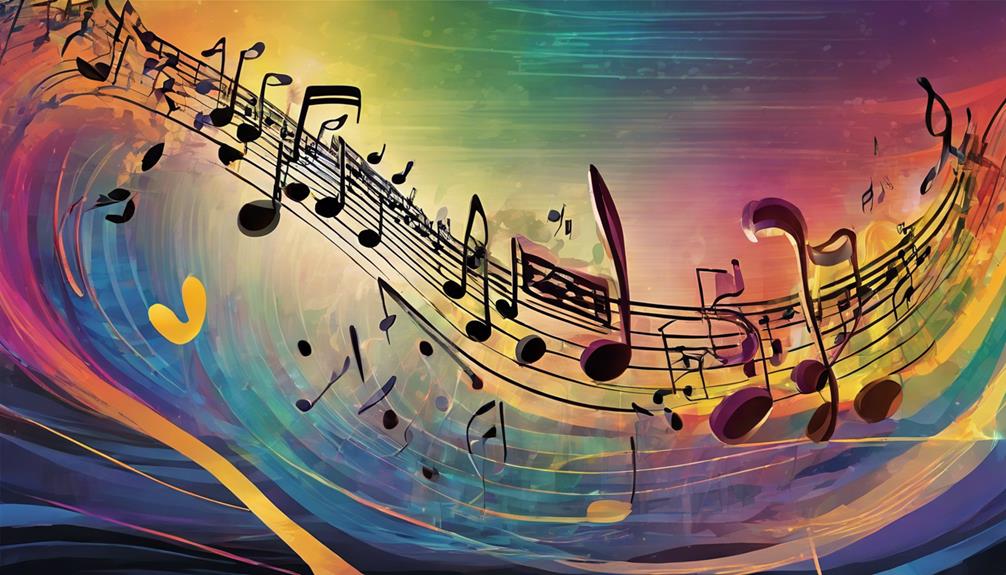
While harmonies and chords may go unnoticed by those who are deaf, these elements play a crucial role in enhancing the depth and emotional impact of music for individuals with hearing capabilities. Deaf people miss out on the intricate blending of multiple tones that create harmonies and chords, enriching music in significant ways.
Here are some key points to consider:
- Harmonies add depth and emotion to music through the combination of different notes played simultaneously.
- Chords provide the foundation and structure to melodies, supporting the overall musical composition.
- Deaf individuals may not fully perceive the complexity of harmonies, missing out on the texture and richness they bring to songs.
- The interplay of harmonies and chords forms the harmonic structure of music, enhancing the listening experience for those who can hear.
Understanding the role of harmonies and chords can help us appreciate the complexity and beauty they add to music, enriching our musical experiences.
Lyrics and Storytelling

Understanding the profound impact of lyrics in music is essential for connecting with the storytelling and emotions woven into each composition. Lyrics serve as the gateway to the narrative within a song, offering insights into the artist's intentions and feelings.
For deaf individuals, the absence of lyrics comprehension poses a significant challenge in grasping the depth and themes of music. Without access to verbal content, deaf individuals may struggle to engage with the storytelling aspects of songs, missing out on the poetic elements and intended messages.
The lyrics play a crucial role in conveying context, emotions, and the overall storytelling within a musical piece. Therefore, the inability to interpret lyrics can hinder a deaf person's ability to fully appreciate the richness and complexity of music compositions.
It's important to recognize the significance of lyrics in music, as they contribute immensely to the overall storytelling and emotional impact of a song.
Concert Atmosphere and Energy
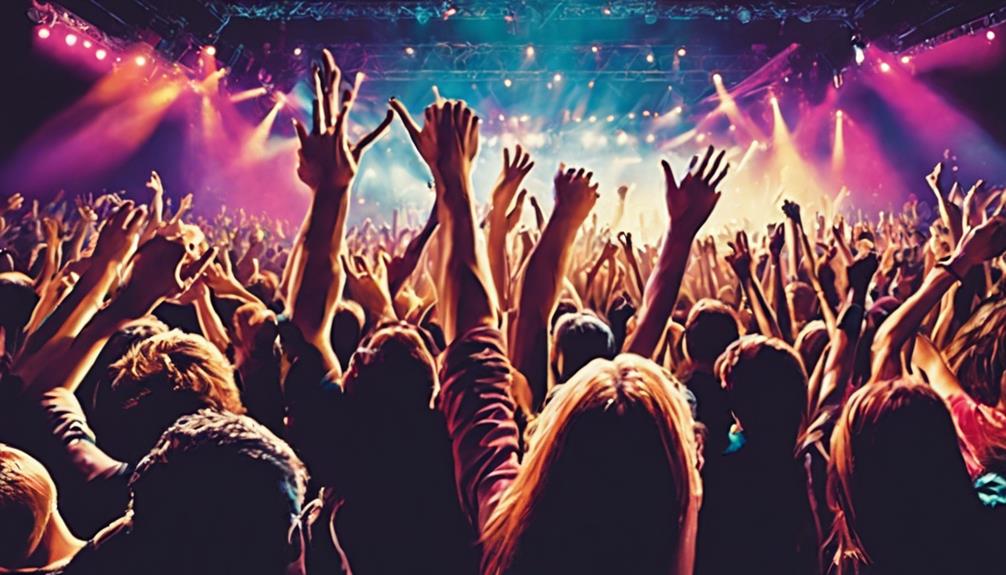
Exploring the vibrant concert atmosphere and energy, deaf individuals are unfortunately unable to fully immerse themselves in the live music experience, missing out on the dynamic interactions and sensory delights that come with being present at a concert. The concert atmosphere offers a unique blend of elements that contribute to the overall experience:
- Vibrations: Deaf individuals may not feel the full range of vibrations that add depth and richness to live music performances.
- Crowd Energy: Missing out on the contagious energy of the crowd, deaf concert-goers are unable to participate in the shared excitement that elevates the concert experience.
- Spontaneous Interactions: Deaf individuals may not witness or engage in the spontaneous interactions between performers and the audience that add an element of surprise and connection.
- Sensory Stimulation: The sensory stimulation from visual effects and vibrations, while impactful, may not fully capture the intricacies and nuances of live music that hearing audiences get to enjoy.
Music Videos and Visuals

We understand that music videos offer a vibrant visual experience that complements the auditory aspects of music.
Deaf individuals may miss out on the storytelling, emotions, and artistic elements conveyed through visuals in these videos.
Exploring methods like sign language interpretation and incorporating accessibility features can enhance the music video experience for those who are deaf.
Visual Impact in Music
Music videos add a layer of visual storytelling and artistic flair to songs, enhancing the overall music experience with choreography, costumes, and stunning set designs. Deaf individuals may miss out on the immersive visual impact created by lighting effects, special effects, and cinematography, which add depth and emotion to the music. The symbolism and creativity portrayed visually in music videos can enhance the audience's understanding and connection to the songs.
Here are some elements that contribute to the visual impact in music:
- Choreography that complements the rhythm and lyrics.
- Costumes that reflect the mood and theme of the song.
- Set designs that create atmospheres and enhance storytelling.
- Special effects and cinematography that evoke emotions and add visual interest.
Sign Language Interpretation
Sign language interpretation in music videos vividly captures the essence of lyrics and emotions, providing Deaf individuals with a visual gateway to the world of music. Sign language interpreters convey the rhythm, tone, and nuances of music through expressive signing, allowing Deaf individuals to better understand song meanings and narratives. This visual representation adds a layer of accessibility and inclusivity for Deaf audiences, enhancing their music experiences by translating songs into a visual language. Below is a table showcasing the impact of sign language interpretation in music videos:
| Aspect | Impact |
|---|---|
| Visual Representation | Translates lyrics and emotions visually |
| Emotional Connection | Conveys rhythm, tone, and nuances of music |
| Understanding Narratives | Enhances comprehension of song meanings |
Accessibility Features in Videos
With the inclusion of visual accessibility features like subtitles and sign language interpretation, music videos become more inclusive and enjoyable for deaf individuals.
- Subtitles in music videos provide access to song lyrics and enhance the music experience for deaf viewers.
- Visual cues help deaf people follow the lyrics and understand the emotions conveyed in the videos.
- Sign language interpretation allows deaf individuals to connect with the artist's message and storytelling on a deeper level.
- Incorporating visual accessibility features in music videos promotes inclusivity and ensures equal enjoyment for all audiences, including the deaf community.
These features enable deaf individuals to feel the music, understand the content, and immerse themselves in the artistic expression, making music videos a more enriching experience for everyone.
Cultural Connections Through Music
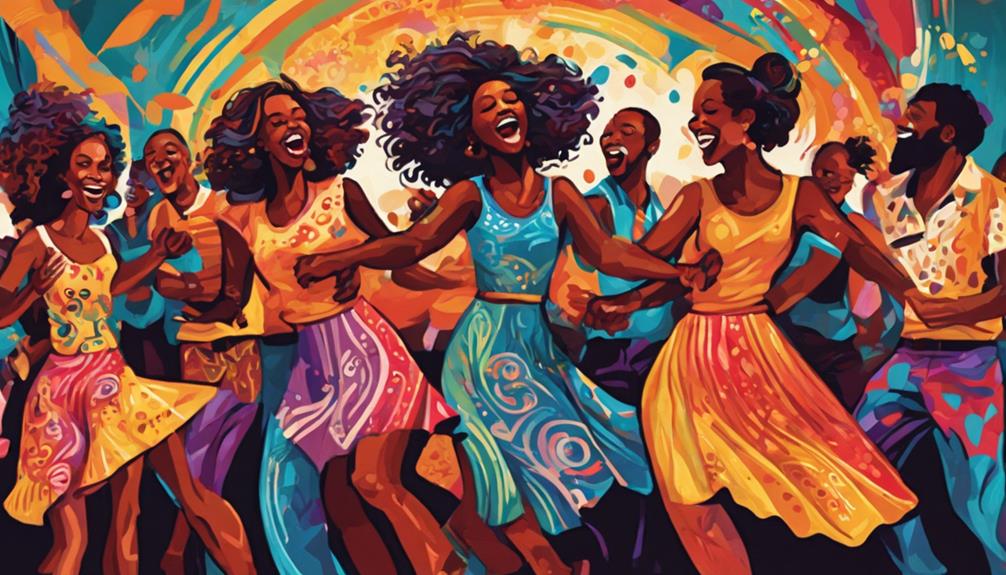
Navigating the intricate web of cultural connections woven through music can be a profound and enriching experience for individuals who can fully engage with its nuances. Deaf people, unfortunately, miss out on these rich cultural connections due to barriers in understanding lyrics and the subtle layers of songs. This lack of access can hinder their ability to grasp the historical and societal contexts embedded in music, impacting their cultural engagement. Deaf individuals may struggle to connect with music-based traditions and rituals that are integral to cultural identity, missing out on the shared experiences and emotional connections that music fosters within a community.
| Challenges Faced by Deaf Individuals in Cultural Connections Through Music | ||
|---|---|---|
| 1. Understanding Lyrics | 2. Historical and Societal Context | 3. Music-Based Traditions |
| Deaf individuals miss out on the meaning and messages conveyed through song lyrics. | They may struggle to interpret the historical or societal significance embedded in music. | Deaf individuals find it challenging to engage with cultural practices and rituals that involve music. |
Evolution of Music Trends

We can't deny that music trends have changed significantly over time, introducing new genres, styles, and technologies that shape the sound of today.
For deaf individuals, keeping up with these shifts can be challenging as they might miss out on the auditory intricacies that define these trends.
From the rise of electronic beats to the storytelling in rap lyrics, understanding the evolution of music trends goes beyond just hearing the tunes.
Music Genre Shifts
Exploring the evolution of music genres reveals a dynamic interplay between societal shifts, cultural influences, and technological advancements. Music constantly adapts to reflect the changing world around us, offering a diverse range of styles to suit different tastes and moods.
As genres shift and blend, new sounds emerge, captivating audiences and pushing the boundaries of creativity. The evolution of music genres such as rock, pop, hip-hop, and electronic music showcases the ever-changing landscape of musical expression.
Each genre shift brings a unique sonic experience, shaping the way we perceive and interact with sound. From jazz to classical to country music, the evolution of genres over time highlights the rich tapestry of musical heritage and innovation.
Impact of Technology
The evolution of music genres, intertwined with societal changes and technological advancements, has significantly impacted the accessibility of music for Deaf individuals.
With innovations like vibrating wearables and vibrating music platforms, technology has revolutionized how individuals with hearing loss experience music. These advancements translate musical vibrations into tactile cues, allowing Deaf individuals to feel the rhythm and beats that were once only heard.
Streaming services now offer sign language versions and subtitles, making music more inclusive and enjoyable. Virtual reality concerts provide immersive experiences, enabling Deaf individuals to engage with music in ways never thought possible.
The fusion of music and technology is breaking barriers and creating new avenues for the Deaf community to connect with the musical world.
Cultural Influences
Cultural shifts in music trends shape the landscape of artistic expression, influencing the evolution of musical styles and collaborations.
- Deaf children may miss out on experiencing the changing music genres and artist collaborations that are influenced by cultural movements.
- Hearing people may not fully grasp the impact of music on societal norms and cultural expressions for Deaf individuals.
- The connection between music and cultural identity mightn't be fully appreciated by Deaf individuals due to their auditory limitations.
- Deaf individuals may not fully understand the messages conveyed in music, such as protest songs or social commentary, which reflect cultural movements.
Music Therapy and Healing

Engaging in music therapy sessions can provide deaf individuals with a unique avenue for emotional expression and healing through rhythmic vibrations and tactile sensations.
Music therapy offers a way for deaf individuals to communicate emotions, reduce stress, and enhance their communication skills through creative musical activities. By focusing on rhythmic vibrations and tactile sensations, music therapy sessions create a space for relaxation and emotional healing tailored to the specific needs of deaf individuals.
Visual aids, vibrations, and sign language are utilized in these interventions to engage deaf individuals in musical experiences that offer therapeutic benefits. The healing power of music therapy extends beyond just emotional well-being; it also fosters improved self-esteem, social interactions, and overall mental health for deaf individuals seeking alternative forms of expression.
Through music therapy, deaf individuals can experience a holistic approach to healing that encompasses physical, emotional, and cognitive aspects, ultimately enhancing their quality of life and well-being.
Frequently Asked Questions
Do Deaf People Miss Music?
We understand the curiosity about whether deaf individuals miss music. It's essential to recognize that the experience varies.
Some of us may not miss music as we haven't had the auditory reference, while others who've lost hearing may long for the sounds they once cherished.
Music's impact can still be felt through vibrations and visuals, providing a different yet meaningful connection.
What Do Deaf People Miss Out On?
We miss out on the intricate details and emotions conveyed through music's auditory elements. Without traditional auditory channels, we may struggle to fully grasp the nuances of tone, pitch, and live sound quality.
The social connections forged through sharing favorite songs or discussing music trends can be challenging for us. Understanding the cultural and historical context of music is also hindered without access to lyrics and spoken content.
How Do Deaf People React to Music?
We perceive music through vibrations, visual cues, and rhythmic sensations. Our connection to music is unique, as we feel the beats in our bodies and express the emotions through sign language. Sign language interpreters help us visualize lyrics and feelings at concerts.
Despite hearing loss, we find solace and joy in music, forming deep emotional bonds and experiencing stress relief. Our world of music is rich and full of sensory experiences beyond just sound.
Can Deaf People Feel the Beat of Music?
Yes, we can feel the beat of music! Vibrations from speakers, drums, and bass lines provide sensory input for us. The rhythm and tempo are experienced through physical sensations.
Music visualization and vibrotactile devices enhance our perception of the beat. Feeling the beat lets us connect with the rhythm and energy of music, even without hearing it.
Conclusion
As we explore the world of music, we realize the layers of depth and emotion that deaf individuals may miss out on. Music isn't just about sound, but a language of the soul that connects us all.
Let's strive to appreciate and share the beauty of music in all its forms, bridging the gap between the hearing and deaf communities.
Let music be the universal symbol of unity and understanding for everyone to enjoy.
Jamie is one of the creative forces behind the words that resonate with our audience at Deaf Vibes. With a passion for storytelling and advocacy, Jamie delves into topics that matter deeply to the deaf and hard-of-hearing community. Jamie’s articles are crafted with empathy, insight, and a commitment to positive change, from exploring the latest advancements in hearing technologies to shedding light on the everyday challenges and victories of those within the community. Jamie believes in the power of shared stories to inspire action, foster understanding, and create a more inclusive world for everyone.
Understanding Hearing Loss
How Does Tobramycin Cause Hearing Loss? A Guide
Journey into the intricate connection between tobramycin and hearing loss to uncover the surprising ways it impacts our ears.
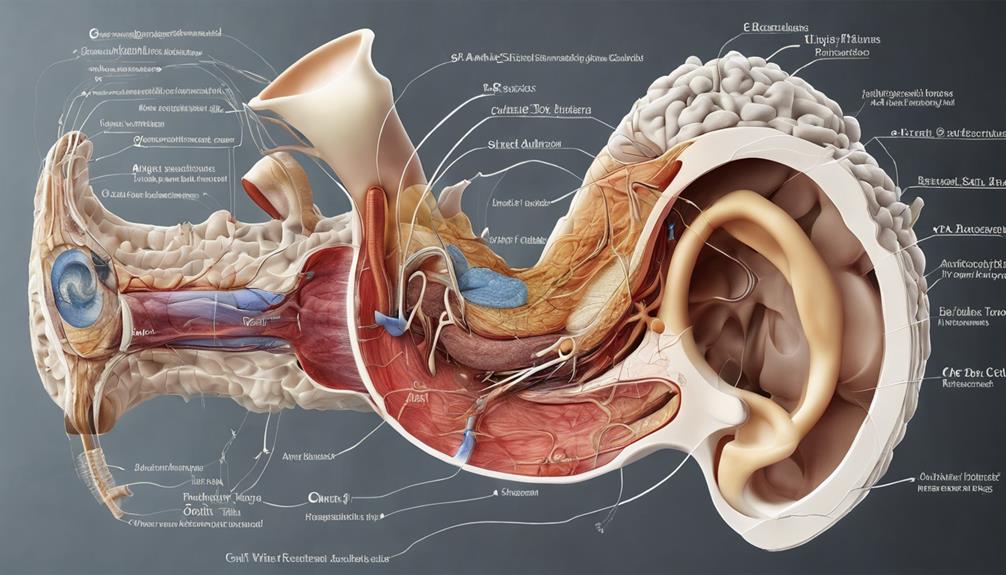
In terms of the impact of tobramycin on hearing loss, its importance may be underestimated.
Have you ever wondered how this common antibiotic can lead to potential damage in our ears?
Let's explore the intricate mechanisms behind tobramycin-induced hearing impairment and uncover the essential insights that can help us better understand and potentially mitigate this side effect.
Key Takeaways
- Tobramycin damages inner ear hair cells, leading to irreversible hearing loss.
- Genetic factors increase susceptibility to tobramycin-induced ototoxicity.
- Hair cell damage pathways involve disruption of essential cellular processes.
- Monitoring drug levels and genetic predispositions are crucial in preventing hearing loss.
Tobramycin's Mechanism of Ototoxicity
Tobramycin exerts its ototoxic effects by directly damaging the delicate hair cells within the inner ear, causing significant impairment in auditory function. This damage occurs primarily in the cochlea, a spiral-shaped structure responsible for converting sound vibrations into electrical signals that the brain can interpret. The inner ear houses sensory cells crucial for hearing, including the hair cells that detect sound waves and transmit signals to the auditory nerve. When tobramycin interferes with these hair cells, it can lead to permanent hearing loss.
The inner ear's intricate architecture makes it particularly vulnerable to the toxic effects of tobramycin. The drug disrupts the normal functioning of these hair cells, ultimately resulting in their degeneration and loss. Once these cells are damaged, they're unable to regenerate, leading to irreversible hearing impairment. This profound impact on the inner ear underscores the importance of monitoring tobramycin usage carefully, especially in individuals with genetic predispositions or mitochondrial DNA mutations that heighten susceptibility to ototoxicity.
Impact on Auditory Hair Cells

Damage to the delicate auditory hair cells in the inner ear is a critical consequence of tobramycin exposure, often resulting in irreversible hearing loss. Tobramycin, commonly used to treat infections like otitis media, exerts its ototoxic effects by directly damaging the sensory cells in the cochlea. This damage leads to sensorineural hearing loss, affecting the ability to perceive sound accurately. The side effects of tobramycin on auditory hair cells can have profound implications for individuals undergoing treatment with this medication, highlighting the importance of monitoring hearing function during therapy.
Understanding the specific pathways through which tobramycin impacts auditory hair cells is an active area of research. Researchers are working to elucidate the mechanisms involved in the toxicity of tobramycin to develop strategies that can mitigate or prevent hearing loss associated with its use. By unraveling the intricate processes through which tobramycin damages auditory hair cells, scientists aim to improve treatment outcomes and minimize the risk of irreversible hearing impairment for patients receiving this medication.
Genetic Factors in Hearing Loss
In understanding the potential genetic factors contributing to hearing loss, researchers have identified specific genetic markers and mitochondrial DNA mutations that can increase susceptibility to aminoglycoside-induced ototoxicity. Genetic susceptibility is a crucial aspect in the development of drug-induced hearing loss, particularly with ototoxic medications like tobramycin.
Here are key points to consider:
- Certain genetic factors and mitochondrial DNA mutations can predispose individuals to aminoglycoside ototoxicity, including hearing loss.
- Genetic susceptibility plays a significant role in drug-induced hearing loss associated with ototoxic medications like tobramycin.
- Patients with specific genetic predispositions require closer monitoring when using ototoxic medications to prevent hearing damage.
Mitochondrial DNA abnormalities are known to contribute to the risk of aminoglycoside-induced hearing loss. Avoiding ototoxic antibiotics in individuals with genetic susceptibility is essential to prevent permanent hearing impairment. Understanding these genetic factors is essential in personalized medicine approaches to mitigate the risk of ototoxicity and preserve hearing function.
Pathways of Ototoxic Hair Cell Damage

Among the mechanisms underlying ototoxic hair cell damage, a key pathway involves the disruption of crucial cellular processes essential for auditory function. Tobramycin, through its toxic effects on the cochlea, interferes with the maintenance of hair cell integrity and function. This disruption can lead to the degeneration and death of these sensory cells, resulting in sensorineural hearing loss.
The severity of tobramycin-induced hair cell damage can vary depending on factors such as dosage and duration of exposure. High-frequency hearing loss is a common manifestation of tobramycin ototoxicity, impacting the perception of sounds in the higher range. Both ears are typically affected by tobramycin-induced cochlear toxicity, contributing to bilateral hearing impairment.
Understanding the pathways through which tobramycin causes ototoxic hair cell damage is crucial in developing strategies to mitigate its severe side effects on hearing.
Strategies for Hair Cell Protection
Exploring proactive measures to safeguard hair cells from tobramycin-induced hearing impairment involves strategic considerations such as minimizing dosage, closely monitoring medication levels, and assessing genetic predispositions.
When aiming to protect hair cells from tobramycin's ototoxic effects, several key strategies can be implemented:
- Minimize Dosage: Utilize the lowest effective dosage of tobramycin to reduce the risk of ototoxicity and potential damage to hair cells.
- Monitor Medication Levels: Regularly monitor tobramycin levels, especially in individuals with compromised kidney function, to adjust dosages accordingly and mitigate ototoxic effects.
- Assess Genetic Predispositions: Consider genetic factors and mitochondrial DNA mutations that may predispose individuals to tobramycin-induced ototoxicity. Close monitoring is crucial in such cases to prevent irreversible damage to hair cells.
Frequently Asked Questions
Does Tobramycin Cause Hearing Loss?
Yes, tobramycin can cause hearing loss. It's important to monitor for signs like tinnitus, dizziness, and hearing impairment when taking this medication. Factors like dosage, treatment duration, and existing health conditions can increase the risk.
Genetic factors and mitochondrial DNA mutations may also play a role in susceptibility to tobramycin-induced ototoxicity. Being aware of these factors and closely monitoring for symptoms are crucial when using this antibiotic.
Can Tobramycin Eye Drops Cause Ototoxicity?
Yes, tobramycin eye drops can cause ototoxicity, leading to hearing loss. While the risk is lower than with systemic use, it's still a concern.
Symptoms may include hearing loss, tinnitus, and balance issues. Following prescribed usage and promptly reporting any unusual symptoms to a healthcare provider is crucial for preventing ototoxicity.
It's essential to be vigilant and proactive in monitoring for these potential side effects.
Can You Get Ototoxicity From Inhaled Tobramycin?
Yes, ototoxicity can occur from inhaled tobramycin, potentially resulting in hearing loss and balance issues. However, the risk is generally lower when compared to systemic administration.
It's vital to monitor for any signs of hearing impairment while undergoing inhaled tobramycin treatment to address any changes promptly. Consulting healthcare providers if experiencing hearing-related changes is crucial for managing potential ototoxic effects of inhaled tobramycin.
What Antibiotics Cause Hearing Loss?
Absolutely, a notable fact is that various aminoglycoside antibiotics, including neomycin, kanamycin, amikacin, gentamicin, and tobramycin, can lead to hearing loss. Monitoring both medication levels and hearing function is essential when using these ototoxic antibiotics to prevent irreversible damage to the auditory system.
Genetic predispositions to aminoglycoside ototoxicity may necessitate closer monitoring with antibiotics like tobramycin to avert hearing impairment.
Conclusion
In conclusion, tobramycin's ototoxicity poses a significant risk to hearing health, damaging both vestibular and cochlear structures. By understanding the mechanisms of ototoxicity and implementing strategies for hair cell protection, healthcare providers can minimize the risk of irreversible hearing loss in patients undergoing treatment with aminoglycoside antibiotics.
Remember, when it comes to preserving hearing, prevention is key – as the saying goes, an ounce of prevention is worth a pound of cure.
Taylor brings a dynamic and analytical perspective to the Deaf Vibes team, focusing on research-driven content that educates and informs. With an unquenchable curiosity for new developments, policies, and social issues affecting the deaf and hard-of-hearing community, Taylor’s writing is a crucial resource for readers seeking to navigate these areas. Whether breaking down legal rights, highlighting educational opportunities, or offering guides on accessible technology, Taylor’s work is an invaluable asset to those seeking to empower themselves and others. Taylor’s commitment to accuracy and depth ensures that our readers have access to reliable and actionable information.
Understanding Hearing Loss
How Seizures Can Cause Hearing Loss: A Comprehensive Guide
Intriguing connections between seizures and hearing loss unveil surprising insights, hinting at a deeper relationship worth exploring further.
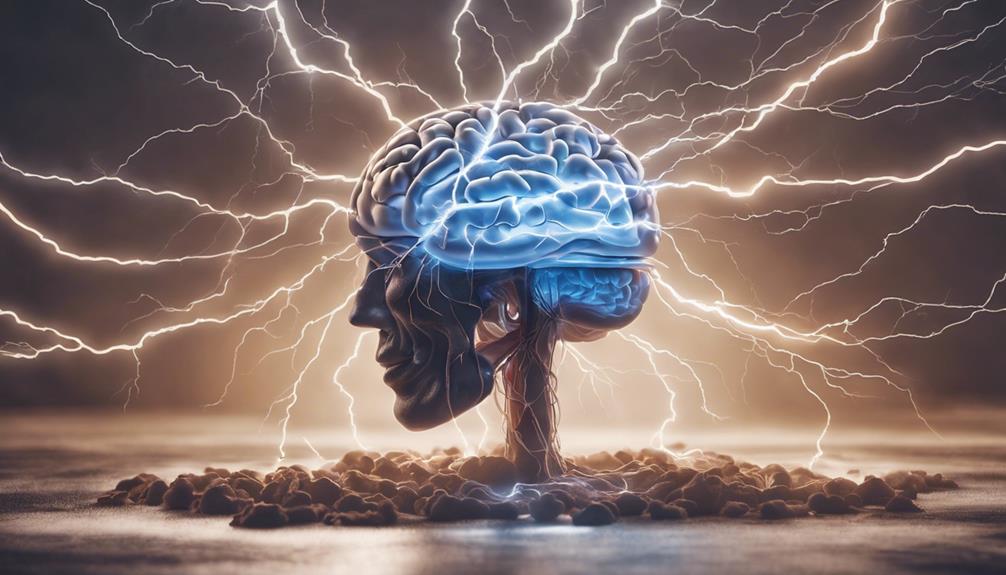
Exploring the intricate connection between seizures and hearing loss reveals a fascinating trend, highlighting the extent to which brain activity can impact more than expected.
The repercussions of seizures on auditory function reveal a complex interplay that warrants further investigation. Understanding how these neurological events can potentially lead to hearing impairment opens up a realm of possibilities in terms of treatment and management strategies.
The implications of this relationship are profound and offer a unique perspective on addressing the multifaceted nature of such conditions.
Key Takeaways
- Seizures damage auditory pathways, leading to temporary or permanent hearing loss.
- Abnormal neuronal excitability in epilepsy impacts inner ear function, causing sensorineural hearing impairment.
- Understanding mechanisms crucial for differentiating transient vs. long-term hearing issues post-seizures.
- Effective management strategies include personalized treatment, monitoring for side effects, and interdisciplinary collaboration.
Mechanisms of Seizure-Induced Hearing Loss
Seizures can directly damage the auditory pathways in the brain, leading to seizure-induced hearing loss. In individuals with epilepsy, abnormal neuronal excitability during focal seizures can impact the inner ear's function, resulting in sensorineural hearing loss. The disruption of auditory nerve pathways by seizure activity can cause temporary or permanent impairments in hearing. This process involves complex interactions between the electrical disturbances characteristic of seizures and the intricate mechanisms responsible for auditory signal transmission within the brain.
Furthermore, prolonged or severe seizures may trigger metabolic changes in the inner ear structures, affecting their ability to process sound effectively. These alterations can manifest as varying degrees of hearing loss, highlighting the importance of monitoring individuals with epilepsy for post-seizure auditory complications. Understanding the mechanisms underlying seizure-induced hearing loss is crucial for differentiating between transient hearing disturbances and potential long-term consequences on auditory health. By elucidating these intricate processes, healthcare professionals can better address the auditory challenges faced by individuals with epilepsy.
Types of Seizures Associated With Hearing Impairment

Among the various types of epileptic events, those affecting specific brain regions can lead to pronounced auditory symptoms, including hearing loss. Epilepsy with auditory features often involves seizures originating in the temporal lobe, impacting the auditory cortex and pathways crucial for hearing. Complex partial seizures with auditory manifestations such as buzzing, ringing, or abnormal sounds can disrupt normal hearing functions. Additionally, prolonged or severe seizures may result in damage to the auditory system, leading to post-seizure hearing loss.
| Types of Seizures Associated With Hearing Impairment | Description | Brain Regions Involved | Auditory Symptoms |
|---|---|---|---|
| Temporal Lobe Seizures | Arise in the temporal lobe | Temporal Lobe | Hearing loss, auditory hallucinations |
| Complex Partial Seizures with Auditory Features | Involve abnormal sounds perception | Auditory Cortex | Buzzing, ringing, abnormal auditory sensations |
| Seizures Causing Post-Seizure Hearing Loss | Result in hearing impairment post-seizure | Auditory Pathways | Temporary or permanent hearing loss |
Impact of Seizures on Auditory Pathways
Disruption of normal sound signal processing in the brain can occur as a result of seizures, potentially leading to temporary or permanent hearing loss. When seizures impact auditory pathways, they interfere with the intricate mechanisms involved in perceiving and interpreting sound.
Here are some key points to consider:
- Abnormal Electrical Activity: Seizures trigger abnormal electrical activity in the brain, disrupting the transmission of auditory signals.
- Temporary or Permanent Hearing Loss: Depending on the severity of the seizure and its effects on the auditory pathways, individuals may experience temporary or permanent hearing loss.
- Sensorineural Hearing Loss: Seizure-induced hearing loss often presents as sensorineural hearing loss, affecting the inner ear's ability to transmit sound effectively.
- Variability in Impact: The impact of seizures on auditory pathways can vary based on factors such as seizure type, duration, and intensity, highlighting the complex relationship between seizures and hearing complications.
Understanding how seizures affect auditory pathways is crucial for developing effective management strategies to mitigate the risk of associated hearing complications.
Treatment Approaches for Seizure-Related Hearing Loss
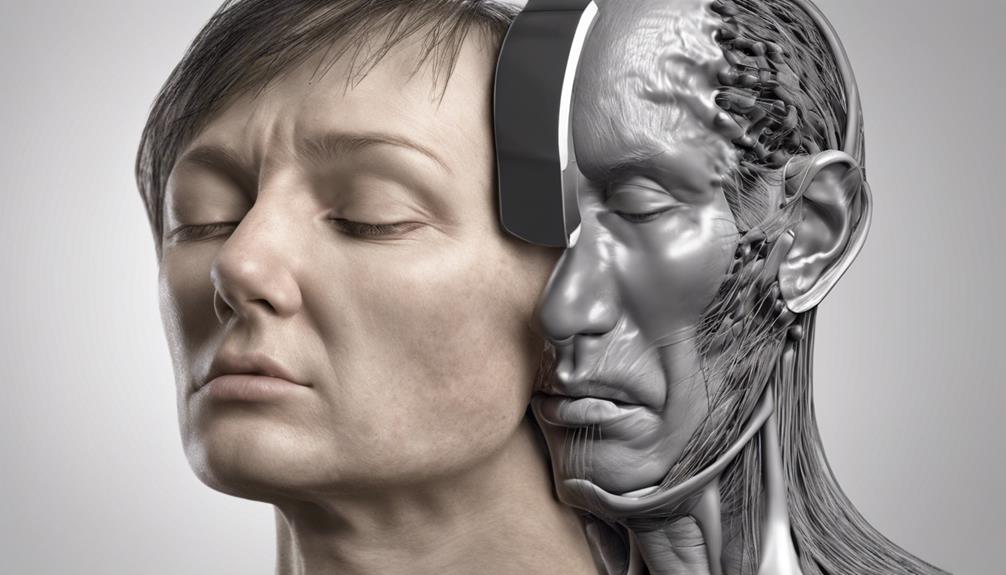
In the management of seizure-related hearing loss, the utilization of antiepileptic medications to control epilepsy plays a crucial role in minimizing the impact on auditory function. For individuals with an uncommon form of epilepsy that includes language before losing consciousness, such as focal impaired awareness seizures, antiepileptic drugs like carbamazepine and levetiracetam are commonly used. These medications help control seizures, potentially reducing the risk of hearing loss.
However, some individuals may not respond well to standard medications, necessitating personalized treatment strategies. Monitoring for potential side effects of antiepileptic drugs is essential in the management of seizure-related hearing loss, as these medications can have adverse effects on hearing and overall health. Collaboration between healthcare providers and specialists is crucial to develop a comprehensive treatment plan that addresses both the epilepsy and associated hearing issues effectively.
Managing Hearing Loss in Epilepsy Patients
When managing hearing loss in epilepsy patients, addressing the direct impact of seizures on the auditory system is paramount to understanding and addressing potential auditory impairments. Here are key considerations:
- Monitoring Post-Seizure Symptoms: Regularly assess for any changes in hearing after seizures to promptly identify and manage any emerging issues.
- Consulting Specialists: Seeking guidance from audiologists or otolaryngologists can aid in determining the extent of hearing loss and devising appropriate interventions.
- Investigating Underlying Causes: Explore potential factors such as medication side effects, neurological impacts of seizures, or genetic predispositions like autosomal dominant traits or family history of hearing loss.
- Managing Loss of Consciousness: Develop strategies to mitigate the risk of injury from falls during seizures, as head trauma can contribute to hearing impairment.
Frequently Asked Questions
Can Seizures Cause Hearing Loss?
Yes, seizures can cause hearing loss. The disruption of auditory processing in the brain during a seizure can lead to temporary hearing impairment. Post-seizure symptoms, such as hearing loss, are often reversible and may improve as the brain recovers.
Although the exact mechanism isn't fully understood, it's believed to involve transient changes in auditory function. Seeking timely medical evaluation and management can effectively address post-seizure hearing issues.
What Neurological Condition Causes Hearing Loss?
We explore the neurological condition causing hearing loss. Various factors, including autoimmune inner ear disease, Meniere's disease, or auditory neuropathy spectrum disorder, can lead to this impairment.
These conditions affect the auditory nerve or cochlea, disrupting sound transmission. Detailed evaluation and timely intervention are crucial to address such issues effectively.
Understanding the underlying neurological mechanisms is pivotal in managing and treating hearing loss associated with these conditions.
What Are the 4 Stages of a Seizure?
We understand the 4 stages of a seizure as follows: prodromal, aura, ictal, and postictal.
The prodromal phase shows early signs such as mood changes or headaches.
The aura stage involves sensory experiences like smells or sounds before the seizure.
The ictal phase is the seizure activity itself, characterized by convulsions or altered consciousness.
Does Your Brain Go Back to Normal After a Seizure?
After a seizure, the brain usually returns to its normal state during the postictal period. Our brain may go through temporary changes affecting cognitive and sensory functions, like hearing.
As the brain's electrical activity stabilizes, cognitive functions gradually recover, but some individuals may have lingering symptoms. Monitoring cognitive functions and addressing sensory issues post-seizure are crucial for optimal recovery.
Think of it like a storm passing, with the brain gradually returning to its calm state.
Conclusion
In conclusion, the intricate relationship between seizures and hearing loss highlights the importance of genetic analysis in diagnosing and managing auditory complications in epilepsy patients.
An interesting statistic to note is that up to 40% of individuals with epilepsy experience some form of hearing impairment, underscoring the need for comprehensive care strategies that address both neurological and auditory health concerns.
By understanding the molecular mechanisms at play, we can pave the way for personalized treatment approaches in the future.
Taylor brings a dynamic and analytical perspective to the Deaf Vibes team, focusing on research-driven content that educates and informs. With an unquenchable curiosity for new developments, policies, and social issues affecting the deaf and hard-of-hearing community, Taylor’s writing is a crucial resource for readers seeking to navigate these areas. Whether breaking down legal rights, highlighting educational opportunities, or offering guides on accessible technology, Taylor’s work is an invaluable asset to those seeking to empower themselves and others. Taylor’s commitment to accuracy and depth ensures that our readers have access to reliable and actionable information.
Understanding Hearing Loss
How Stroke Can Cause Hearing Loss in One Ear
Mysteries unravel as we delve into the intricate relationship between stroke and hearing loss in one ear, revealing unexpected connections.

When delving into the intricate connection between suffering a stroke and experiencing hearing loss in one ear, it is evident that the impact goes beyond just physical constraints. This correlation sheds light on the complex ways our bodies respond to these conditions.
Exploring how stroke can specifically lead to hearing loss in one ear unveils a fascinating yet crucial aspect of our overall well-being that warrants further exploration. The implications of this link extend far beyond what meets the eye, prompting a deeper examination into the mechanisms at play and the potential implications for holistic healthcare.
Key Takeaways
- Stroke-induced damage can lead to sudden sensorineural hearing loss in one ear.
- Ischemic strokes can significantly impact auditory pathways, affecting sound perception.
- Communication challenges and quality of life can be affected by hearing loss post-stroke.
- Early identification and management of hearing issues post-stroke are crucial for improved outcomes.
Stroke and Unilateral Hearing Loss
Stroke can lead to unilateral hearing loss, affecting one ear more significantly than the other due to disruptions in the auditory pathways caused by the brain damage. This hearing impairment can impact various aspects of auditory function, such as sound localization and speech understanding. The specific impact on hearing post-stroke can vary depending on the location and extent of the brain damage incurred during the stroke event. Individuals may struggle with accurately determining the direction of sounds or understanding speech in noisy environments due to this unilateral hearing loss.
Treatment options for unilateral hearing loss following a stroke may involve auditory rehabilitation programs aimed at improving speech comprehension and sound localization abilities. Additionally, the use of hearing aids can help individuals compensate for the hearing loss in the affected ear, enhancing their overall auditory experience and quality of life. Understanding the implications of stroke on hearing is crucial in developing effective interventions to address the impact of unilateral hearing loss in individuals who've experienced a stroke.
Mechanisms of Hearing Impairment Post-Stroke
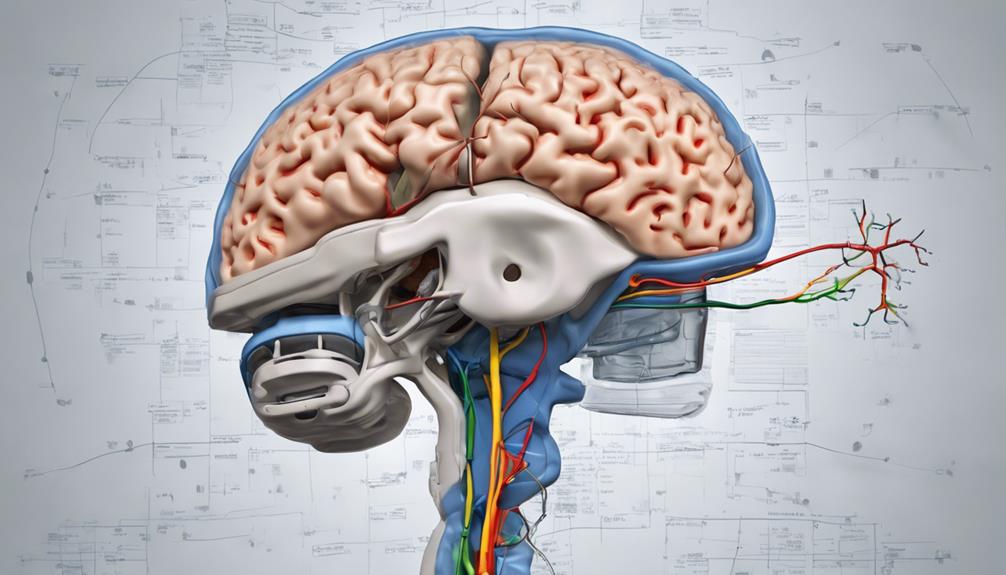
Damage to the auditory pathways in the brain following a stroke can result in hearing impairment in one ear. The impact of stroke on hearing is multifaceted, with ischemic strokes and hemorrhagic strokes affecting auditory function through different mechanisms. Ischemic strokes, stemming from restricted blood flow, can disrupt the blood supply to specific auditory regions, leading to deficits in auditory processing. Conversely, hemorrhagic strokes, characterized by bleeding in the brain, may affect the auditory cortex and related structures, influencing how sound is perceived unilaterally. The location and extent of brain damage post-stroke play a crucial role in determining the nature and severity of hearing loss experienced in one ear. Understanding the intricate relationship between stroke and auditory pathways is essential for comprehensively addressing unilateral hearing impairments in stroke survivors.
| Mechanism | Type of Stroke | Effect on Hearing |
|---|---|---|
| Disrupted blood supply | Ischemic Stroke | Impacts specific auditory regions |
| Auditory cortex damage | Hemorrhagic Stroke | Affects auditory processing and perception |
Impact of Stroke on One Ear
Emerging research highlights the intricate relationship between auditory function and cerebral events, particularly emphasizing the impact of stroke on unilateral hearing abilities. When a stroke occurs, the disrupted blood supply can lead to damage in the auditory system of one ear. This damage affects the nerves and structures responsible for processing sound, potentially resulting in sudden sensorineural hearing loss in that ear. Ischemic strokes, which restrict blood flow to specific areas of the brain, can have a more pronounced impact on hearing in one ear compared to other types of strokes.
Monitoring changes in hearing in the affected ear post-stroke is crucial for the early detection and management of potential hearing loss. By closely monitoring the auditory function in stroke patients, healthcare providers can intervene promptly to mitigate the effects of hearing impairment. Understanding the relationship between strokes and hearing loss in one ear is essential for providing comprehensive care to individuals who've experienced a stroke.
Hearing Loss in Stroke Patients

Exploring the intricate relationship between stroke and auditory function reveals the significant impact of cerebrovascular events on hearing loss in patients. Hearing loss in stroke patients often stems from damage to the auditory pathways in the brain, particularly in cases where the stroke affects specific regions responsible for processing sound. This can result in sensorineural hearing loss, where the inner ear or the auditory nerve is impaired due to brain damage caused by the stroke. Communication difficulties may arise, impacting the quality of life for individuals experiencing this type of hearing loss.
The severity and manifestation of stroke-induced hearing loss can vary depending on the type and location of the stroke. Recognizing and managing hearing loss early on in stroke patients is crucial for effective rehabilitation and improved outcomes. By addressing hearing issues promptly, healthcare professionals can help minimize the negative impact on communication abilities and overall well-being. Early intervention and appropriate management strategies play a pivotal role in enhancing the quality of life for stroke survivors dealing with hearing loss.
Preventing Hearing Loss After Stroke
How can immediate medical interventions post-stroke contribute to preventing or minimizing hearing loss in affected individuals?
Monitoring for sudden changes in hearing post-stroke is essential, as prompt action can address emerging issues.
Rehabilitation therapies, including auditory training, play a crucial role in enhancing communication abilities post-stroke.
Healthcare providers recommend regular follow-ups to monitor and manage potential hearing loss effectively.
Prevention strategies post-stroke involve a multidisciplinary approach, including early identification of hearing issues and tailored interventions.
Comprehensive assessments by healthcare professionals can aid in early detection of hearing loss, leading to timely interventions.
Implementing personalized rehabilitation plans that incorporate auditory training can significantly improve outcomes for individuals at risk of hearing loss post-stroke.
Frequently Asked Questions
Why Did I Suddenly Lose My Hearing in One Ear?
We suddenly lost hearing in one ear due to various reasons like inner ear issues, infections, or even wax buildup.
It's essential to seek medical attention promptly to determine the underlying cause. Diagnostic tests can pinpoint the exact reason for the sudden hearing loss and guide appropriate treatment.
Monitoring any associated symptoms and following up with healthcare providers can aid in managing and potentially resolving the hearing loss.
What to Do When Can't Hear Out One Ear?
When we can't hear out of one ear, it's crucial to seek immediate medical attention. This sudden hearing loss could be a sign of various underlying conditions, including issues with the ear canal or inner ear.
Prompt evaluation by a healthcare professional can help diagnose the cause and determine the appropriate treatment. Ignoring unilateral hearing loss can lead to further complications, so it's essential to act swiftly and get the necessary medical care.
Can Hearing Loss From Stroke Be Reversed?
Yes, hearing loss from a stroke can sometimes be reversed through prompt medical intervention and targeted rehabilitation efforts. Immediate treatment for the underlying cause of the stroke is vital for improving the chances of reversing associated hearing loss.
Rehabilitation therapies like speech therapy and auditory training play a crucial role in restoring hearing function post-stroke. Factors such as the stroke's severity, affected brain area, and timely intervention influence the extent of recovery.
What Is the Most Common Cause of Unilateral Hearing Loss?
Damage to the inner ear or auditory nerve on one side is the most common cause of unilateral hearing loss. Other factors like infections, head trauma, acoustic neuroma, and Meniere's disease can also lead to hearing loss in one ear.
Unilateral hearing loss can impact sound localization, understanding speech in noisy environments, and overall quality of life. Seeking immediate medical attention is crucial when experiencing sudden or unexplained hearing loss in one ear to rule out serious underlying conditions.
Conclusion
In conclusion, the intricate relationship between stroke and hearing loss in one ear underscores the importance of maintaining cardiovascular health.
By understanding the mechanisms of auditory impairment post-stroke and recognizing the potential warning signs of sudden hearing loss, individuals can take proactive steps to prevent long-term consequences.
Just as blood vessels nourish both the brain and the ears, safeguarding against stroke risk factors can ultimately protect our precious sense of hearing.
Taylor brings a dynamic and analytical perspective to the Deaf Vibes team, focusing on research-driven content that educates and informs. With an unquenchable curiosity for new developments, policies, and social issues affecting the deaf and hard-of-hearing community, Taylor’s writing is a crucial resource for readers seeking to navigate these areas. Whether breaking down legal rights, highlighting educational opportunities, or offering guides on accessible technology, Taylor’s work is an invaluable asset to those seeking to empower themselves and others. Taylor’s commitment to accuracy and depth ensures that our readers have access to reliable and actionable information.
-

 Navigating the VA System4 weeks ago
Navigating the VA System4 weeks agoVA Hearing Loss Rating Chart: Understanding Disability Compensation
-

 Therapies and Interventions3 months ago
Therapies and Interventions3 months ago10 Auditory Processing Goals for Effective Speech Therapy
-

 Living with Hearing Loss2 months ago
Living with Hearing Loss2 months ago10 Deaf-Friendly Dating Sites to Find Your Perfect Match
-

 Sign Language3 months ago
Sign Language3 months agoSign Language Emoji Translator: How to Communicate With Gestures
-

 Tinnitus1 month ago
Tinnitus1 month agoVA's Rating System for Tinnitus and Hearing Loss Explained
-

 Navigating the VA System3 weeks ago
Navigating the VA System3 weeks agoUnderstanding Bilateral Hearing Loss VA Rating Criteria
-

 Vetted1 month ago
Vetted1 month ago15 Best Oticon Hearing Aids to Improve Your Hearing in 2024
-
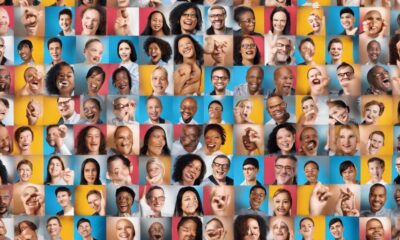
 Living with Hearing Loss2 months ago
Living with Hearing Loss2 months agoAn Introduction to Deaf Culture: Understanding the Basics




















